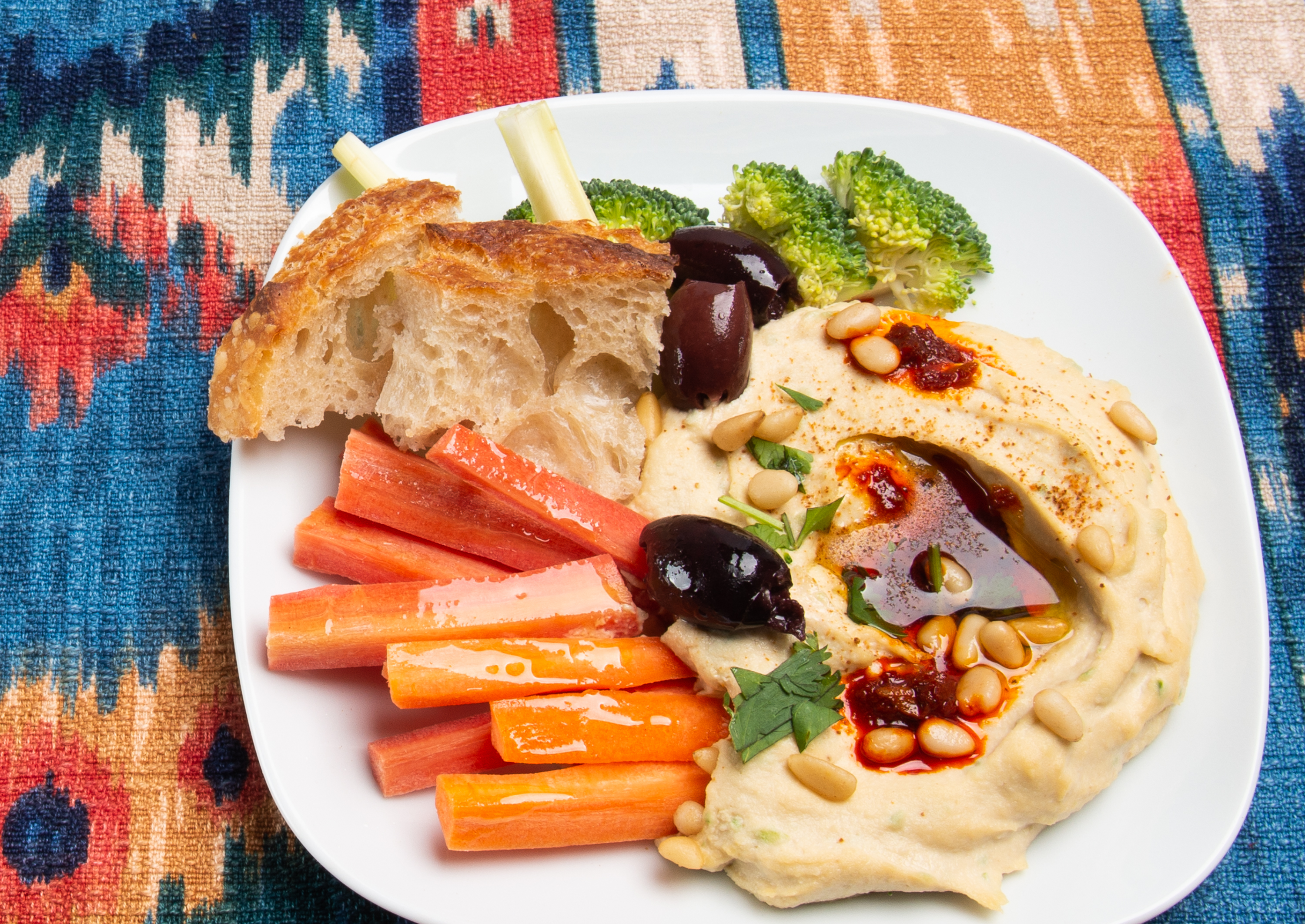Cooking brings people together. Right?
Apparently that is not is the case if the food is hummus.
The chickpeas themselves don’t seem to be the subject of much debate. It is generally believed that they have been harvested as food since antiquity. Harold McGee, in his seminal On Food and Cooking:The Science and Lore of the Kitchen, writes that chickpeas, originating in southwest Asia, have been cultivated for about 9,000 years.
The argument seems to be about who deserves credit for inventing hummus, the ubiquitous dip we now associate with the Middle East.
Syria. Lebanon. Turkey. The Palestinian territories. Israel. They all claim that the dish is theirs. Period. End of discussion.
You know how Middle Eastern discussions seem to go. The debate can sometimes get ugly—even about hummus.
Case in point: After years of quarreling about the origins of hummus, The Association of Lebanese Industrialists went so far as to file a complaint with the European Union–largely targeting Israel– for an infringement of food copyright. The lawsuit argued (unsuccessfully, apparently–there has been no action by the EU) that there is ample historical support for giving them ownership of the name. Too, they claimed that there are a number of clear legal precedents for the European Union to act, pointing out that the EU only allows feta made in Greece from the milk of Greek sheep and goats to be marketed as feta. Likewise, EU regulations only allow Italy to sell cheese labeled as Parmesan and only the French region of Champagne can call its sparkling wine champagne.
American-Israeli producer Ari Sandel found some humor in the whole brouhaha and produced a short film, West Bank Story, about a heated dispute between an Israeli restaurant (Kosher King) and a Palestinian one (Hummus Hut). West Bank Story is an unabashed parody of West Side Story complete with finger-snapping dance scenes. The film won an Academy Award for Best Live Action Short Film in 2006. Really.
You can watch the twenty-one minute movie on You Tube. It is pretty funny. Here is a link to the movie trailer: Trailer for West Bank Story .
Here is an excellent recipe for hummus. I’ve always struggled to get the texture of hummus right–creamy rather than grainy. In this recipe, you boil the canned chickpeas with a little baking soda to get them extra soft. Apparently the baking soda raises the alkalinity in the cooking water enough to break down the cell walls of the chickpeas making them soft and easily blended into a smooth, creamy hummus.
Genius.
Ingredients
- 1 15 oz. can of chickpeas (rinsed and drained)
- 1/2 t. baking soda
- 1/4 C. lemon juice (more to taste--I used more)
- 1 large garlic clove (roughly chopped)
- 1/2 t. fine sea salt (to taste--I used more)
- 3/4 C. tahini
- 2 to 4 T. ice water (use more to get the consistency you want)
- 1/2 t. ground cumin
- 2 T. extra-virgin olive oil
- 1/2 fresh jalapeno (finely chopped, optional)
- Garnish with your choice of toppings (chopped parsley or cilantro, harissa paste, extra olive oil, kalamata olives, toasted pine nuts, cayenne pepper or paprika)
Instructions
- Drain and rinse canned chickpeas. Put the chickpeas into a pan with the baking soda and enough water to cover the chickpeas by a couple of inches. Bring the water to boil and boil for 20 minutes. (Lower the heat a bit if the boiling water begins spilling over the top of your pan.) After 20 minutes of boiling, your chickpeas will be very soft. Drain them in a colander and rinse with cool water for about 30 seconds. Set aside.
- Put lemon juice, garlic and salt in the bowl of your food processor. Process until the garlic is finely chopped and then let the mixture sit in the bowl for at least 10 minutes for the strong garlic flavor to mellow.
- Add the tahini to the garlic mixture in your processor bowl and blend until the mixture is thick and creamy. Stop the processor and scrape down the sides of the bowl as needed. If you need to (I did), add a bit more tahini oil or olive oil to emulsify the tahini mixture.
- Drizzle the ice water, one tablespoon at a time, into your hummus until you get an ultra smooth consistency. You want your mixture to be light-colored and creamy at this point.
- Add the ground cumin and drained chickpeas to the bowl of your processor. Blend. Drizzle olive oil into the bowl until the mixture is very smooth and is the consistency you want in your final product. This should take about 2 minutes.(Scrape down the sides of the bowl as you need to during this process.) You can also add more ice water (by the tablespoon) as you blend to get the consistency you want.
- Taste hummus for seasoning. Add more salt, lemon juice and/or olive oil to get the consistency you want. I added in some finely chopped fresh jalapeno also.
- Spoon your finished hummus into an attractive bowl or onto a platter. Garnish as desired. Drizzle with more of your best quality olive oil.
This recipe is adapted from one that appeared on the Cookie and Kate blog. Here is the link: Cookie and Kate Hummus

 Save Recipe
Save Recipe
2 thoughts on “Creamy Hummus: A Culinary Whodunnit”